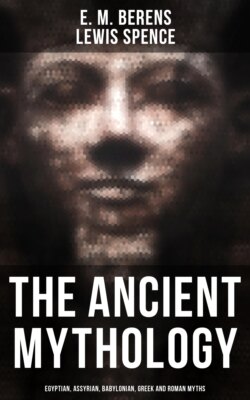Читать книгу The Ancient Mythology: Egyptian, Assyrian, Babylonian, Greek and Roman Myths - Lewis Spence - Страница 137
На сайте Литреса книга снята с продажи.
Feasts and Festivals
ОглавлениеBabylonian religious festivals were, as a rule, periods of jubilation and rejoicing. Each god had his own day of festival in the calendar. The first day of the year, or Zag-muku, was sacred to the goddess Bau. Gudea, who had made Nin-girsu his favourite, attempted to 'work him into' this festival by uniting him in marriage with Bau, and he offers her marriage gifts on New Year's Day. But later the Zag-muku was transformed into a festival to Merodach. The circumstance that it was celebrated in the first month of the year shows that it did not originally belong to Merodach, whose month was Marcheshuan, the eighth. But it is eloquent of his popularity that the great New Year's feast should have been dedicated to him. It seems to have lasted for at least ten or twelve days. As has already been described, the union of Nabu and Merodach, father and son, was solemnly celebrated, Nabu piously paying a visit to his father's sanctuary. The other gods were supposed to assemble in spirit in Merodach's temple to witness the ceremony, and afterwards the priests of Merodach escorted the idol of Nabu back to its shrine, themselves carrying the image of their deity.
To behold this festival, which was celebrated with all possible magnificence, people flocked from all parts of Babylonia. The king, approaching the statue of the god, seized its hands in token of covenant, and in later times Assyrian monarchs, in order to legitimatize themselves as rulers of Babylonia, went through this ceremony, which came to be recognized as duly fulfilling their claims to sovereignty in the southern land; but whereas they went through the ceremony once only, the kings of Babylonia celebrated it annually with the intensest possible devotion.
